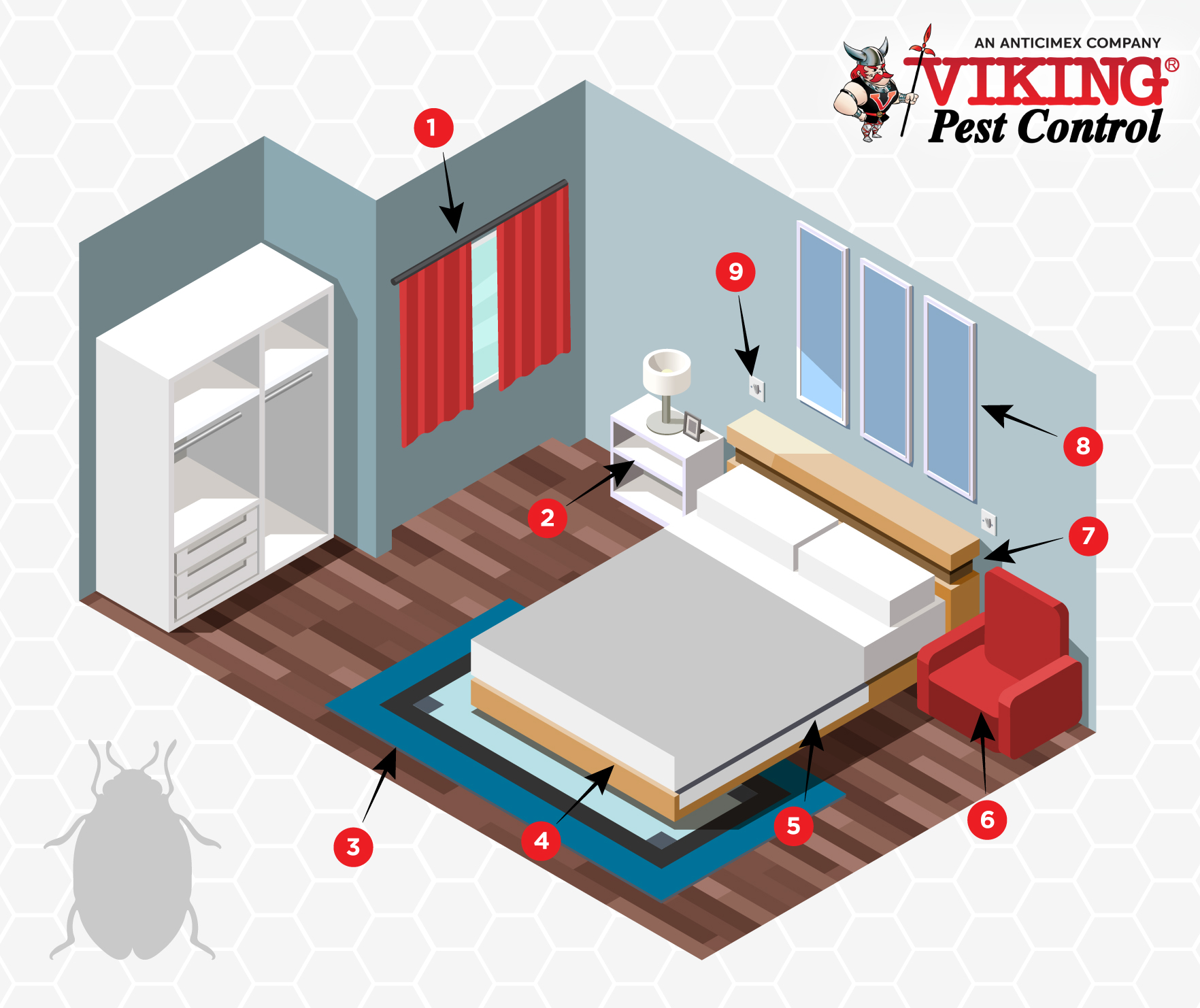Introducing the Scientific Research Behind Bed Bug Treatment Solutions
Discover the most effective Bed Insect Treatment Techniques for Your Pest Control Strategy
When faced with a bed bug invasion, determining the most efficient treatment techniques comes to be crucial for successful insect control. Choosing the finest bed insect therapy technique tailored to your certain circumstance is essential for accomplishing long lasting results.
Identifying Bed Bug Infestations
Determining indicators of a bed insect invasion can be vital in successfully addressing the issue and avoiding further spread in a prompt way (Bed bug treatment). Bed pests are evasive pests that hide throughout the day and come out at night to feed on blood. Usual indicators of a bed insect infestation include reddish-brown stains on bed linens or furnishings from crushed pests, tiny dark spots that are bed pest waste matter, shed skins in areas where bed pests hide, and a pleasant, moldy smell in extreme infestations
Trigger recognition of a bed insect problem is vital to prevent the scenario from rising and requiring much more extensive therapy techniques. If you suspect a bed pest invasion, it is recommended to seek professional pest control assistance to successfully eradicate the insects from your home.
Non-Chemical Therapy Methods
Non-chemical therapy methods supply effective alternatives for attending to bed pest problems without counting on traditional pesticides. Warm treatment is one such method that entails raising the temperature in ravaged areas to levels that are lethal to bed bugs. Furthermore, heavy steam treatment can be employed to kill bed pests and their eggs by subjecting them to high temperatures, making it a useful non-chemical option for combating invasions.
Chemical Therapy Choices
Having actually explored efficient non-chemical approaches for dealing with bed bug infestations, it is important to consider the effectiveness of chemical treatment alternatives in combating these resilient bugs. Chemical treatments play an important function in bed insect control, especially in extreme invasions where non-chemical techniques may not give adequate alleviation. There are numerous types of chemical treatments available for handling bed insects, consisting of insecticides, desiccants, and insect development regulators.
Pesticides are typically utilized to kill bed bugs on get in touch with and deal residual security versus future infestations (Bed bug treatment). Desiccants work by damaging the external waxy layer of bed pests, resulting in dehydration and death. Insect development regulators disrupt the bed pest life process by preventing their growth from nymphs to adults, ultimately decreasing the population gradually
When thinking about chemical therapy choices, it is vital to focus on safety and security by following label directions, using suitable safety gear, and taking into consideration the potential dangers to humans and animals. Consulting with a professional parasite control service can help figure out one of the most reliable and secure chemical therapy for your particular bed bug problem.
Integrated Pest Management Methods

IPM methods for bed bug control may include complete examination to identify the level of invasion, recognition of essential harborage sites, and application of sanitation measures. Additionally, minimizing clutter, securing fractures and holes, and eliminating potential concealing spots can help prevent bed insects from establishing themselves.
Moreover, non-chemical control approaches such as warmth treatment, vacuuming, steam cleansing, and making use of bed insect traps can be efficient parts of an IPM strategy. These methods target bed insects at numerous life stages and interrupt their reproductive cycle, leading to populace decrease.
Routine tracking and follow-up inspections are essential in IPM to assess the effectiveness of control procedures and make essential changes. By incorporating incorporated insect monitoring techniques right into your pest control plan, you can accomplish lasting success in managing bed bug infestations.
Expert Elimination Solutions
Expert elimination services give customized experience and resources for efficiently removing bed insect infestations. Bed pest invasions can More about the author be especially challenging to tackle because of their resilience and capability to conceal in different cracks and crevices. Professional exterminators are trained to recognize the indications of bed insects, situate their hiding places, and use targeted treatment approaches to eliminate them efficiently.
When selecting an expert extermination service for bed bug control, it is vital to try to find licensed and qualified parasite control firms with experience in dealing particularly with bed pests. These professionals have accessibility to a variety of therapy alternatives, including chemical and non-chemical methods, to efficiently battle bed insect invasions while ensuring the security of pet dogs and residents.
Additionally, professional pest control experts can offer follow-up examinations and therapies as needed to make certain that the infestation is totally eliminated. Their competence in bed insect actions and treatment methods can help avoid future problems, giving tranquility of mind for services and home owners alike. When confronted with a stubborn bed pest infestation, enlisting the solutions of specialist pest control operators is typically the most dependable service to accomplish full obliteration.
Final Thought

When encountered with a bed insect problem, identifying the most efficient treatment approaches comes to be vital for successful bug control. Common indicators of a bed pest invasion consist of reddish-brown discolorations on bedding or furnishings from crushed bugs, tiny dark spots that are bed pest excrement, lost skins in areas where bed pests hide, and a pleasant, stuffy odor in extreme problems.
Having checked out efficient non-chemical approaches for attending to bed bug infestations, it is vital to think about the effectiveness of chemical therapy options in combating these resistant pests. Chemical treatments play an important role in bed insect control, specifically in extreme infestations where non-chemical techniques may not supply enough alleviation. By incorporating these different therapy methods right into a comprehensive pest control plan, individuals can effectively manage and see it here get rid of bed insect problems in their homes or companies.